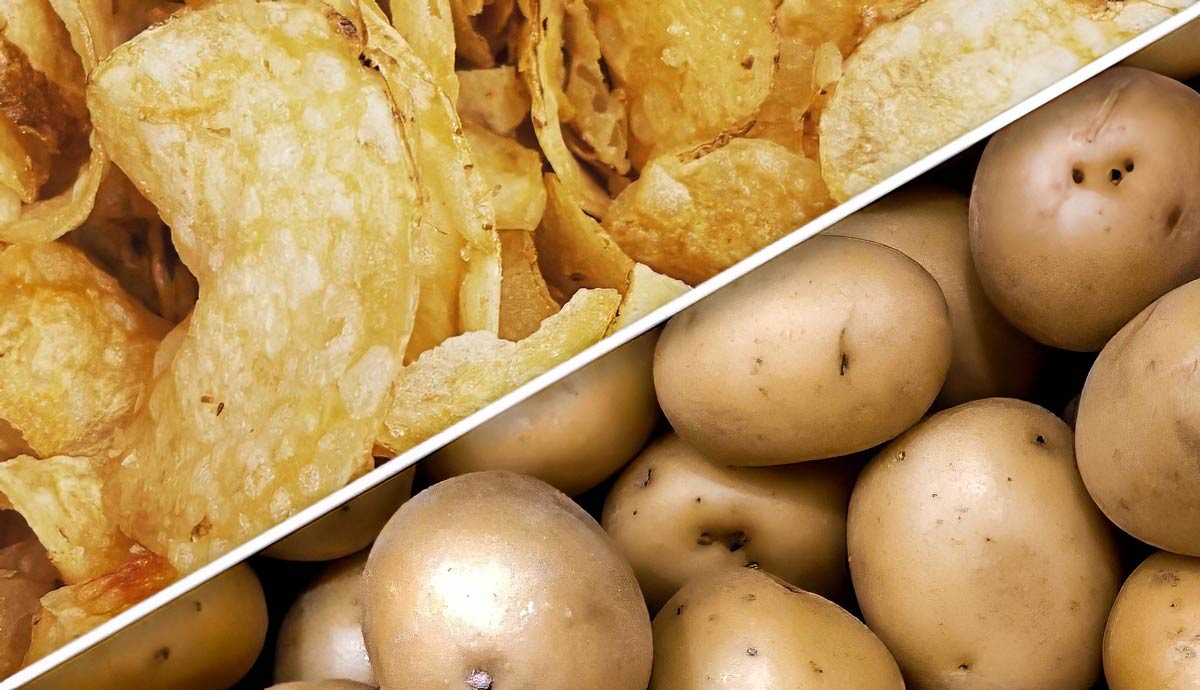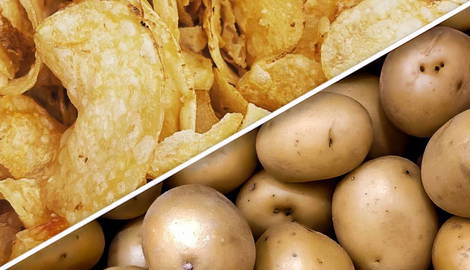
Potatoes are such a standard part of our diet today that we hardly ever consider where they come from or what they’re all about! Yet they are so important that if they suddenly disappeared, the consequences would send shockwaves around the world.
Potatoes hide many intriguing secrets, and their history is a fascinating rabbit-hole of odd stories and strange facts. Once confined to a small corner of the world, potatoes now have found themselves on the dinner plates of people everywhere.
Here are 19 facts about potatoes and their history.
1. Potatoes Came From the Andes

Today, potatoes are found in food everywhere around the world, but their origin is in the highest reaches of the western parts of South America. Mainly in the high reaches of the Andes in what is now Peru, hundreds of varieties of potatoes evolved and provided sustenance for the people who lived there.
2. Their Cultivation Goes Back Thousands of Years
While people outside of the western part of South America have only had the potato for a few hundred years, the natives of Peru have a long history with this culinary delight. They’ve been cultivating it for thousands of years, and some estimates suggest the tuber was cultivated as far back as 8000 BCE!
3. The Spanish Discovered the Potato During Their Conquests
Europeans discovered potatoes for the first time as a result of the Spanish conquests of the New World. After defeating the Incas, the Spanish conquistadors took control of Peru and noticed the locals sustained themselves on potatoes.
4. The Potato Wasn’t an Immediate Hit With the Europeans in the New World
Potatoes were useful for the Spanish in the Americas, but they shied away from eating them. As far as most Spaniards were concerned, potatoes were good for sustaining the local indigenous populations. It was a good source of nutrition that could keep the native workforce well-fed and healthy.
5. The Potato Made its Way to Europe During the 16th Century

Potatoes made their way to Europe during the Columbian exchange, the swapping of food, goods, people, and diseases between the Old and the New Worlds. Potatoes weren’t a high priority. They were used as a source of food for sailors. Once they reached Spain, potatoes were planted in Spanish soil.
6. It Took Decades for Potatoes to Adapt
Potatoes originated in equatorial regions, and adaptation to the seasonal changes of Europe took several decades. As such, potatoes weren’t immediately viable as a common crop.
7. Potatoes Became Popular in China
In the mid-1600s, Dutch traders brought potatoes to China. Despite being enjoyed in the imperial court, potatoes became popular among the commoners as they require less maintenance and water than rice, making them a better alternative when there is hardship and famine. Since China experienced much hardship during this period, the potato became very popular. It wasn’t always enjoyed, though. Among the poorer people, noodles and rice were often seen as luxuries because potatoes were so common in their childhood.
8. War Helped Spread the Potato Across Europe

Throughout the 17th century and well into the 18th century, potatoes were not viewed as anything important by European governments. For average people, however, they were a useful secret. Soldiers used them as useful and efficient food sources, especially during the Spanish War of Succession in the early 18th century. Wherever soldiers went, so did the potato, which was planted in gardens across the continent.
9. Governments Overlooked the Potential of Potatoes
During the 17th and 18th centuries, wheat was the biggest crop in Europe. It was very visible, took up lots of space, and was easy to tax. As a way to avoid being taxed on their food, people started growing potatoes in their gardens. Above ground, it’s an unassuming plant that doesn’t draw much attention to itself. Below ground, however, there’s a whole world of nutritious goodness!
10. Frederick the Great was Responsible for the Popularity of Potatoes in Europe
In 1756, King Frederick of Prussia issued the Potato Order, decreeing that potatoes be planted by certain groups of people. Those who did not comply were targeted with fines. Potatoes quickly became the staple of Prussia and helped transform the economy. Since then, Frederick the Great has been known as the “Potato King,” and potatoes are regularly placed on his grave in reverence of his act, which brought significant life-quality improvement to the people of Prussia.
11. Marie Antoinette Wore Potato Flowers in her Clothing

After the success of the potato crops in Prussia, France adopted the potato into its agricultural framework. This project was pursued by Louis XVI, and his wife Marie Antoinette popularized potato flowers in fashion by wearing them in her clothes.
These two monarchs got the chop, but the potato lived on—Vive les pommes de terre!
12. Potatoes in the United States Came From Ireland
Although potatoes were brought to America by immigrants from Europe and grown in small numbers during the 17th century, it wasn’t until 1719 that the first large-scale potato crop was grown. These potatoes were brought over by Irish immigrants to New Hampshire. In 2013, the potato was named New Hampshire’s official state vegetable.
13. Potato Blight Caused Famine in Ireland

The potato became extremely successful in Ireland, so much so that the entire country relied on it to survive. So in 1845, when the potato blight infected Ireland’s potatoes, crops failed, resulting in a nationwide famine. Exacerbated by uncompassionate laws from the British government (Ireland was part of Britain at this time), approximately one million Irish people died, with another 2 million becoming refugees. This accounted for between 20% and 25% of the entire Irish population at the time.
14. Potatoes are Members of the Nightshade Family
The term “nightshade” naturally raises some concern when used to describe where your food comes from, but not all members of this plant family are deadly. This family of plants includes 2,700 species. Potatoes, along with tomatoes, peppers, and eggplants, are all members of the Nightshade (Solanaceae) family.
While the potato itself is harmless (when cooked), don’t eat the other parts of the plant, and keep them away from pets!
15. Potatoes Can Grow at Extremely High Altitudes
Because of their evolutionary origin in the high mountains and valleys of the Andes, potatoes adapted to grow at high altitudes. This doesn’t mean they can’t be grown at lower altitudes, however. Potatoes can be grown from sea level all the way up to 15,420 feet (4,700 meters).
16. There are Thousands of Varieties

As a result of cultivation across the world, potatoes have been adapted for every climate and context. Today, there are almost 5,000 varieties of potato.
17. There is No Record of Who Invented the Potato Chip (or Crisp)

There are spurious tales of potato chips being invented. One suggests that a chef named George Crum invented them in 1853 in New York. The story goes that famous shipping magnate Cornelius Vanderbilt stopped in at Crum’s restaurant and ordered his potatoes to be thinly sliced and fried. When the plate of food was served, he sent them back, claiming the potatoes weren’t sliced thinly enough. Crum responded by slicing the potatoes as thin as possible as an act of spite and invented chips in the process. According to the story, instead of being outraged, Vanderbilt loved the new dish, and potato chips were born.
The earliest mention of potato chips, however, comes from England. There is a recipe dated back to 1815, but no mention of who the inventor was.
18. Potatoes Were the First Vegetables Grown in Space
Some see the future of humanity as being closely linked to outer space. Experiments with survival have been conducted for decades, and this includes growing food. In 1995, the first experiments began with growing potatoes in zero gravity.
Growing potatoes in space resulted in the hardy tuber being unable to reach full size. Many small potatoes were grown, and since then, the Quantum Tubers system has been constructed and is used on the International Space Station. Today, astronauts (and cosmonauts) can eat micro potatoes grown in the Quantum Tubers system, which speeds up the growth cycle and produces millions of tiny spuds every year!
19. China is the World’s Biggest Producer of Potatoes

China is the World’s Biggest Producer, followed by India. Together, these countries account for about one-third of global potato production. Other big producers of potatoes include Russia, the United States, Germany, France, Bangladesh, Poland, and the Netherlands.
In 2020, Peru, the original land of the potato, was ranked 12th in the world for total potato production.
Potatoes are, without a doubt, one of the most important foods in the world today. Enjoyed the world over, these super-foods claimed their place from small, local beginnings in the mountains of South America to be a staple crop grown the world over.










